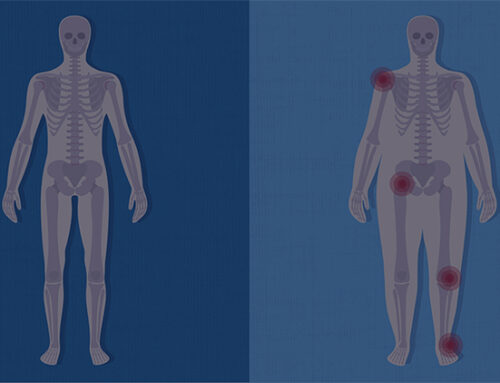Carpal tunnel syndrome, the entrapment of the median nerve at the wrists, i.e., the carpel tunnel, is by far the most common cause of nerve compression in existence. Millions have been diagnosed with this syndrome and most have received surgery to prevent irreversible nerve damage.
Although carpal tunnel release surgery is oft en assumed to be a reliably successful eff ort, reality tells us otherwise. This condition is common and easily diagnosed by a combination of clinical tests, physical signs, symptoms and objective diagnostic studies. The surgery for this condition is just as straightforward. Although advances have brought us to the realm of minimally invasive, endoscopic carpal tunnel release surgery, it does have its own set of risks. Not everyone gets better after surgery. In fact, some patients feel worse or unchanged by a surgical endeavor.
Great importance is placed on knowing in advance who may have a problematic course following surgery versus who will uneventfully regain sensation, strength and dexterity. The question is who will return to the workplace with their limitations behind them? And, who will find themselves with permanent workplace restrictions or even an inability to return to employment despite maximal efforts by the surgeon and patient.
The Origins of Carpal Tunnel Syndrome
There are multiple origins of carpal tunnel syndrome. Surprisingly, repetitive stress disorder is not the most common cause. Instead, an idiopathic origin reigns supreme above repetitive stress such as prolonged keyboarding, thyroid dysfunction, diabetes, obesity, arthritis or pregnancy. Furthermore, despite varied etiologies, carpal tunnel syndrome, once present, acts the same and typically progresses over a short period of time.
Pinpointing Symptoms of Unsuccessful Patient Recovery
Unexpectedly, the factors governing a worse prognosis are not what we would assume. Th e preoperative electrodiagnostic study (EMG) is not necessarily a good refl ection of the patient’s outcome. Patients, who show significant electrophysiological abnormalities, can do quite well. Conversely, a study demonstrated that patients with negligible or negative EMGs actually fared worse after carpal tunnel release surgery.
This seeming paradox may be secondary to some less than obvious factors. The patient with a normal electrodiagnostic study may have been wrongly diagnosed with carpal tunnel syndrome in the first place.
For these patients, releasing the carpal tunnel is doomed to failure. Instead of conducting the procedure, attention should have been directed at the real origin of the symptomatology.
Other factors can play a significant role in prognosis. One must consider physical factors, psychological interplay at home and work, and even socioeconomic markers.
Older patients demonstrate more residual abnormal clinical findings following surgery than younger patients, despite a higher satisfaction rate. College education and higher income are associated with better postoperative outcomes. Patients with a strong family support system or even supportive friends fare better following carpal tunnel release surgery than those without the social web. The role of “mind over matter” is further emphasized by studies demonstrating how a supportive work environment leads to better postoperative outcomes. Work places with cohesive, inclusive dynamics that empathize with the injured worker reveal better worker retention rates aft er surgery, and earlier return to work statistics than those work places that ostracize or marginalize the injured worker.
Generations of doctors have been trained that patients with work-related pathology automatically have worse outcomes than matched sets of patients with non-work-related conditions. Yet, studies reveal the inaccuracy of this assumption for carpal tunnel syndrome. Only a subset of those patients are problematic in their recovery. That subset includes the contested claims patient. These are patients with workers’ compensation claims who are initially denied workers’ compensation insurance, but then are subsequently approved with the assistance of legal representation. It is this group that shows worse return to work rates and greater time out of work following surgery. The workers’ compensation patient who has no need for legal representation has the same success rate as the general population. But why? Possibly the contested claims group’s diminished support from friends, family, and certainly from the employer is the cause.
Although factors such as diabetes, gender and obesity play a real role in the predisposition of an individual to carpal tunnel syndrome, there is no evidence of correlation between these markers and postoperative outcome. Alternatively, the patient’s preoperative symptom complex may influence postoperative outcome. Patients with nocturnal complaints as well as numbness and tingling tend to respond better to carpal tunnel syndrome than those with daytime pain as the predominant symptom.
When considering the outcome of carpal tunnel release surgery, remember that the patient’s carpal tunnel is attached to a person whose psyche needs to be addressed as well.
Schedule appointment
About Dr. Purcell
Dr. Purcell specializes in orthopedic surgery as well as hand/upper extremity surgery. He has a particular interest in utilizing minimally invasive procedures for his patients. Dr. Purcell was one of the first orthopedists to popularize the endoscopic surgical technique for treating carpal tunnel syndrome surgery, which leads to a faster healing time. He furthered the field of orthopedic surgery with both local and national lectures and presentations, helping colleagues gain insight and knowledge to improve patient care and outcome. His other areas of interest include biological regeneration/rejuvenation of joints, arthritis, tendinitis, nerve compression, repetitive stress disorders and trauma.





